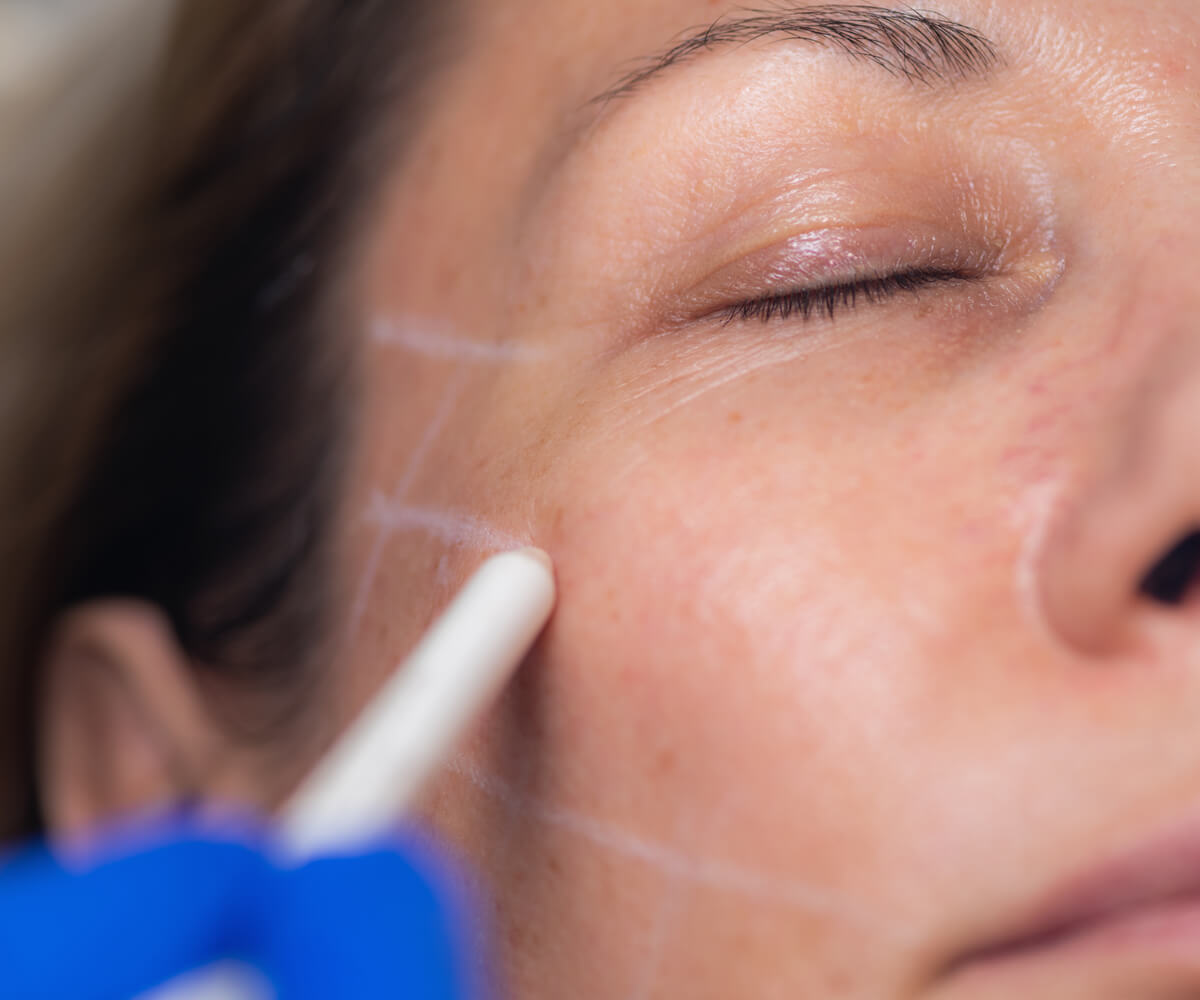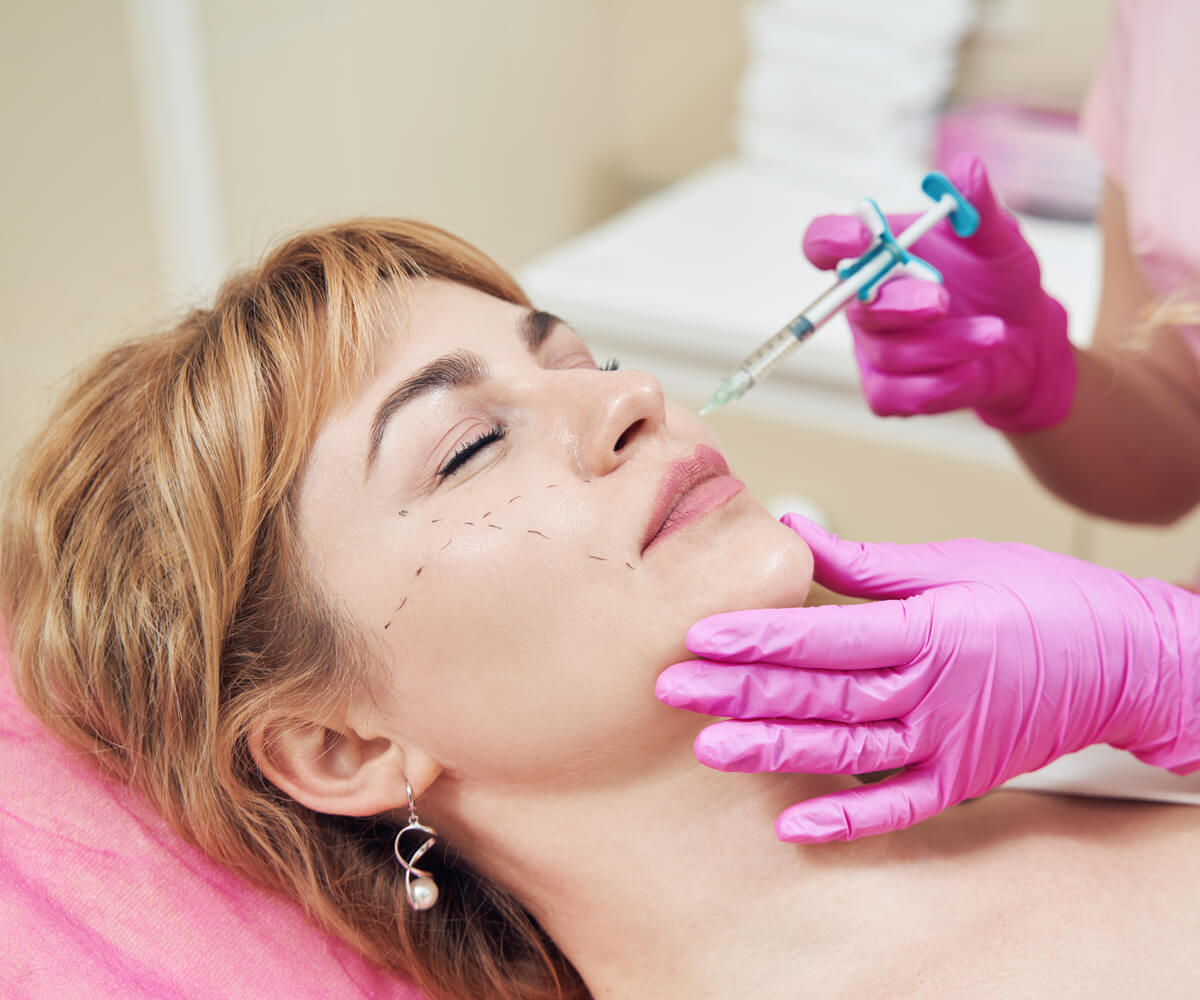Thread Face-lifting

Revive Your Youthful Glow
Thread Lift Introduction
Thread lifting can be traced back to the 1990s in Moscow, Russia. Other physcians and medical practitioners in Europe have also helped pioneer the thread lifting movement. However in the past decade, physicians in Asia (South Korea) have made purposeful modifications leading to better and improved patient satisfaction.
Why Consider a Thread lift procedure for your patients?
As facial aging progresses, the skin loses its thickness and smoothness, as well as its elasticity. This manifestation of aging can begin as early as in the twenties, leading to sunken appearances and hollowness.
With new technologies available, patients are seeking non surgical interventions with less down time and complications. Thread lifting is one of the newest non surgical approaches to address these concerns for facial lifting & tightening.
What age group is most ideal for thread lift?
Many patients seeking thread lift are in their 40s and 50s. However, can patients younger or much older receive this treatment?
The short answer is yes. In fact, Dr.Kim has been successful in treating patients in their 30s to patients even in their 70’s with great results. The overall health of the patient and their skin quality should be assessed, but with the proper skill and technique, a wide age range can be successfully treated with the thread lift.
What Treatments can I offer with the Thread lift?
With proper training you can address the:
Nasolabial fold
Marionette Line
Refinement and Correction of the lip border lines
Nose malformations
Glabellar Lines
Under eye modifications
Eyebrows
loose skin
excess fat
hair loss
and more!
How do you perform a threadlift?
First you want to address the needs of the patient. Performing a proper consult is key to satisfactory results. You can then prepare the proper blueprint design for the procedure to plan ahead.
For the procedure you would need to administer the anesthesia (local and/or anesthetic cream). Lifting threads are placed at the proper location in reference to the design. Knowing how and when to use the mechanical pull threads vs the collagen stimulating threads will determine your final results. Your technique and skill in these areas will determine your outcome, therefore proper training is absolutely essential for thread lifting.
Thread lift vs Facelift. Whats the difference?
The main difference is one is a surgical procedure while the other is non-surgical. Both are designed to address the looseness of aging by lifting and tightening the face. Thread lifting is mainly done with local anesthesia (although general anesthesia is an option) while a facelift requries general anesthesia and larger incisions.
The complications of a thread lift may include infection, bleeding, bruising and thread misplacement. Possible complications of a facelift include infection, nerve injury, hematomas, scarring, and skin necrosis. The results of a facelift can last 10 years while a thread lift can last 1 to 2 years depending on your skill level. Thread lifts can also be repeated without complications with the right technique and skill.
Will a thread lift prevent the patient from from having a surgical facelift in the future?
The answer is No. The thread lift is very safe and very low risks if it is done safely and correctly. They are meant to dissolve (absorbable sutures) and be replaced by your own natural collagen providing a natural lifting effect. Even after the threads are absobed by your body, the lifting effects of the procedure will still continue for many more months due to your own collagen. It will not prevent the patient from having surgical procedures in the future.
Are there celebrities who have had a thread lift?
Yes, and some have been very open about receiving these procedures. You can just google celebrities and thread lift to find out who. In fact, Eva Mendes even posted her experience of thread lifting on her instagram page with pictures to show.
What should the patient expect after the thread lift procedure?
The patient may experience some swelling, bruising and pain post procedure. Depending on the patient, the symptoms may last from 3 days to 10 days. However, it should not prevent the patient from their daily activities.
Over the counter medications can be used for the discomfort. Once the swelling and bruising subsides, the patient should not notice any visible threads if they are placed correctly.
From this point on, the patient can expect positive changes to their lift. However, keep in mind collagen formation does take time for the body to regenerate and form, so a gradual and natural increase in the tightening and lift can be expected for the next few months.
Congratulations! in the start of your journey to give your patients wonderful and satisfaction in their quest for youth.
Thread Lift Introduction:
Thread lifting can be traced back to the 1990s in Moscow, Russia. Other physcians and medical practitioners in Europe have also helped pioneer the thread lifting movement. However in the past decade, physicians in Asia (South Korea) have made purposeful modifications leading to better and improved patient satisfaction.
As facial aging progresses, the skin loses its thickness and smoothness, as well as its elasticity. This manifestation of aging can begin as early as in the twenties, leading to sunken appearances and hollowness.
With new technologies available, patients are seeking non surgical interventions with less down time and complications. Thread lifting is one of the newest non surgical approaches to address these concerns for facial lifting & tightening.
Many patients seeking thread lift are in their 40s and 50s. However, can patients younger or much older receive this treatment?
The short answer is yes. In fact, Dr.Kim has been successful in treating patients in their 30s to patients even in their 70’s with great results. The overall health of the patient and their skin quality should be assessed, but with the proper skill and technique, a wide age range can be successfully treated with the thread lift.
With proper training you can address the:
Nasolabial fold
Marionette Line
Refinement and Correction of the lip border lines
Nose malformations
Glabellar Lines
Under eye modifications
Eyebrows
loose skin
excess fat
hair loss
and more!
First you want to address the needs of the patient. Performing a proper consult is key to satisfactory results. You can then prepare the proper blueprint design for the procedure to plan ahead.
For the procedure you would need to administer the anesthesia (local and/or anesthetic cream). Lifting threads are placed at the proper location in reference to the design. Knowing how and when to use the mechanical pull threads vs the collagen stimulating threads will determine your final results. Your technique and skill in these areas will determine your outcome, therefore proper training is absolutely essential for thread lifting.
The main difference is one is a surgical procedure while the other is non-surgical. Both are designed to address the looseness of aging by lifting and tightening the face. Thread lifting is mainly done with local anesthesia (although general anesthesia is an option) while a facelift requries general anesthesia and larger incisions.
The complications of a thread lift may include infection, bleeding, bruising and thread misplacement. Possible complications of a facelift include infection, nerve injury, hematomas, scarring, and skin necrosis. The results of a facelift can last 10 years while a thread lift can last 1 to 2 years depending on your skill level. Thread lifts can also be repeated without complications with the right technique and skill.
The answer is No. The thread lift is very safe and very low risks if it is done safely and correctly. They are meant to dissolve (absorbable sutures) and be replaced by your own natural collagen providing a natural lifting effect. Even after the threads are absobed by your body, the lifting effects of the procedure will still continue for many more months due to your own collagen. It will not prevent the patient from having surgical procedures in the future.
Yes, and some have been very open about receiving these procedures. You can just google celebrities and thread lift to find out who. In fact, Eva Mendes even posted her experience of thread lifting on her instagram page with pictures to show.
The patient may experience some swelling, bruising and pain post procedure. Depending on the patient, the symptoms may last from 3 days to 10 days. However, it should not prevent the patient from their daily activities.
Over the counter medications can be used for the discomfort. Once the swelling and bruising subsides, the patient should not notice any visible threads if they are placed correctly.
From this point on, the patient can expect positive changes to their lift. However, keep in mind collagen formation does take time for the body to regenerate and form, so a gradual and natural increase in the tightening and lift can be expected for the next few months.
Congratulations! in the start of your journey to give your patients wonderful and satisfaction in their quest for youth

